Great Pyrenees
The Pyrenean Mountain Dog is also commonly known as the Great Pyrenees and these dogs are one of the best protection and guard dogs in the world. They are born to protect and that trait is clearly shown in their character. Some of the things they like to protect are humans, sheep, family members, yards, fields, and not just that.
They can easily develop an irrational protective instinct towards things that do not need protection like a couch or even a room in the house.
Despite all that, the Great Pyrenees can be a devoted and loving family pet that will shower you with love and affection. They are usually very stable and intelligent, and one of the most impressive things about this breed is their stunning looks. The Great Pyrenees are very large, powerful, and elegant. They have luscious white coat that leaves anyone who encounters this dog in awe.

Height:
25-32 in (63-81 cm)

Weight:
85-130 lb (38-59 kg)

Origin:
France

Life Expectancy:
10-12 years
Dog Breed Characteristics
The Pyrenean Mountain Dog is considered to be a giant dog breed that has immense power and strength. They have a strong bone structure but without being sluggish or slow. Many Great Pyrenees owners describe them as incredibly elegant.
The Great Pyrenees has a length that is slightly bigger than its height and is considered to be well-proportioned. These dogs have a rather small head compared to the rest of their bodies. The nose of the Great Pyrenees is totally black, and their eyes are small and almond-shaped. Their ears are also small and set in line with their eyes. They are triangular and fall flat on the side of their head.
They have long, straight, and very muscular limbs that give them the ability to cover great distances and gain impressive speeds. The Pyrenean Mountain Dog moves with grace and dignity. They have a long and powerful stride that exudes elegance.
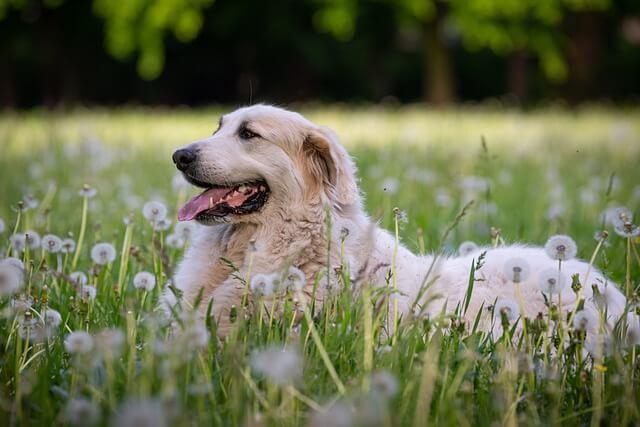
Grooming
Pyrenean Mountain Dog has a long and thick topcoat and a dense and wooly undercoat. These dogs are heavy Sheeder and you will have to spend a lot of time brushing these dogs to keep the amount of hair under control and to keep them looking good.
Pyrenean Mountain Dog coat colors:
- white
- white with badger, gray, reddish-brown, or varying shades of tan markings
The rest is basic care; trim their nails when needed (if they don't wear them down naturally), brush their teeth weekly to prevent tartar buildup and bacteria development. Regularly check their ears for any sign of redness or a bad odor that can indicate an infection.
You can wipe their ears with a cotton ball dipped into an ear cleaner. The key for your dog to get used to all things mentioned above is to start early with them. Make a positive experience for the dog, full of praises and rewards, and you can be sure that your dog will enjoy all these things when they grow up.
Exercise
Pyrenean Mountain dogs are not highly active dogs. They were bred for working purposes and mostly patrolling the area to ensure no predators would hurt their flock. Walks with their owner should be enough for this dog to be happy and satisfied.
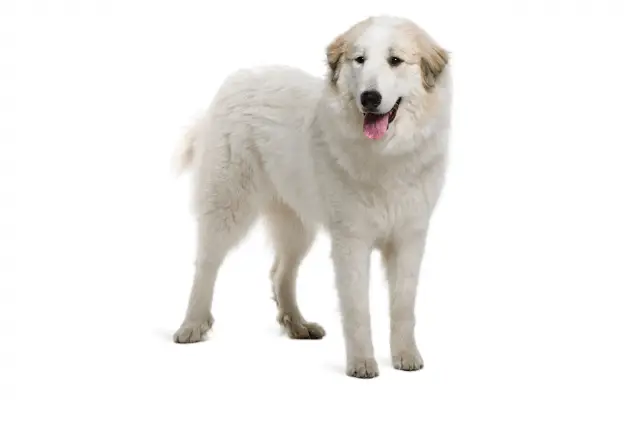
Great Pyrenees temperament
A proper Pyrenean Mountain Dog’s temperament should be calm and docile. They have a natural protective instinct that needs to be controlled through early training and socialization. A properly trained and socialized Great Pyrenees will be the best possible pet or even a therapy dog, you can imagine. These dogs should never be aggressive or nervous, instead, they should be calm and extremely confident.
If you train your Great Pyrenees to be guard dogs, they will be extremely focused and very alert. They have a natural instinct to guard so these skills can be easily polished. These dogs were mostly used to guard sheep in the Pyrenean mountains, and they had to work independently and have problem-solving skills.
That means that the Pyrenean Mountain Dog can be a bit stubborn so keep in mind to start training and socializing them as soon as possible.
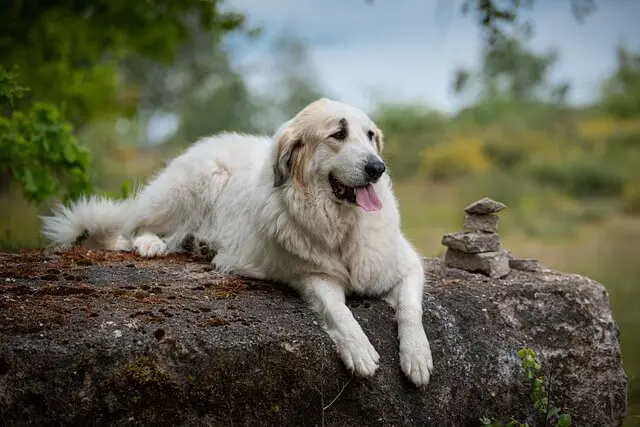
Pyrenean Mountain Dog training and socialization
The Pyrenean Mountain Dog is a giant dog breed that should be properly trained and socialized so you don’t end up with a big dog you can’t control. Untrained and unsocialized dogs can become a nightmare, and some owners don’t have the capability to handle such a breed and end up having to give them away.
To avoid this scenario, start training your Pyrenean Mountain Dog as soon as it arrives at your home. If you are unsure about the proper Great Pyrenees training methods, you can always enroll your pup in doggy kindergarten and let professional dog behaviorists help you.
If you decide to train them yourself, make sure you have enough patience and consistency, as they tend to be a bit stubborn. Include plenty of food and treats in your Pyrenean Mountain Dog training and use positive reinforcement as a training method. You will start noticing positive results in no time.
Socializing a Pyrenean Mountain Dog should be on top of your dog's priority list. They have a strong protective instinct, and if they are not socialized, those instincts can become a problem. As soon as your Great Pyrenees puppy receives all necessary shots, take them to dog parks and busy places so that your puppy gets exposed to different situations and can learn social hierarchy as well as proper behavior.
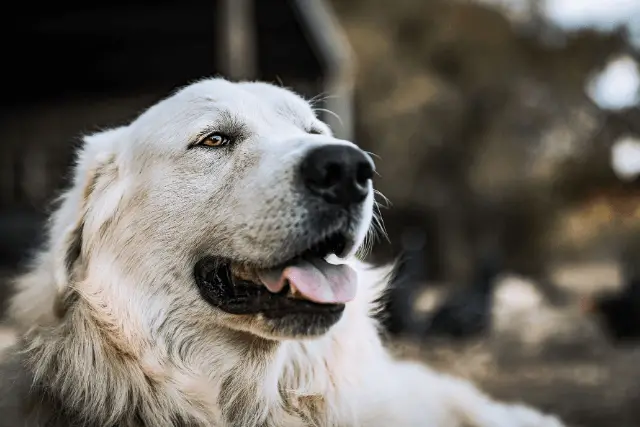
When the Great Pyrenees is properly socialized, you will have the best and most loving pet you can imagine.
Great Pyrenees and kids
The Great Pyrenees are excellent family dogs that will get along with every family member including children. Take note that kids need to be taught how to properly play and interact with a dog so Great Pyrenees can enjoy their company. If they are raised together from an early age they will be playing parting, and they will enjoy spending time together.
These dogs will be very protective of kids in their own families. Children should never be left alone with any dog, no matter what breed it might be. You should make sure that your children understand how to approach dogs of this breed and understand how to interact and play with them properly.
Great Pyrenees and other animals
These dogs can get along well with other dogs and can enjoy their company. They are extremely friendly and love having company, so your Great Pyrenees won’t mind other pets.
However, every dog, no matter what breed they are, should be socialized and properly introduced to other pets. Take your time and even if your dog doesn’t react well on your first try doesn’t mean they won’t get along. Some dogs require time but Great Pyrenees are generally very affectionate and gentle towards other pets, especially if they were raised together.
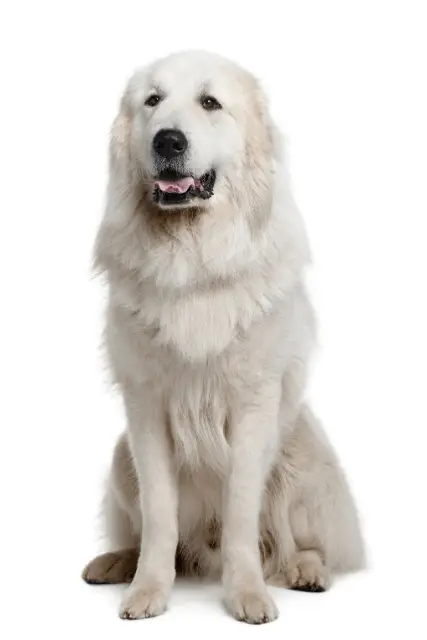
Health problems
The Great Pyrenees is generally considered a healthy breed, but they are prone to some health issues and concerns like any other dog breed. These dogs have an average lifespan of 10-12 years.
When getting any breed, the breeder must show you the health tests that they have done for their breeding dogs. Dogs must be adequately tested because taking a chance and hoping that the puppy’s parents are healthy is a risk no one should ever take.
Only healthy dogs should be bred because that is the only way to ensure that bloodlines will remain healthy and without any problems. Health problems associated with this breed are;
- patellar luxation
- Hip dysplasia - Genetic problem affecting hips resulting from an improperly formed hip joint.
- Elbow Dysplasia - Usually, it affects large breeds and is caused by uneven growth of three bones making a dog’s elbow.
- Cataracts - Cloudy spots on the lens of the eye
- Entropion - A defect causing the eyelid to roll inward.
- Gastric Torsion - Also known as bloat. A dangerous condition that causes the stomach to twist (torsion).
- Obesity - The Great Pyrenees is prone to gaining weight if they are not properly exercised.
- Addison's disease
Breeders
This dog breed is not for everyone, and we advise you to research before you go after Great Pyrenees. You will need to dedicate your time and energy to training and socialization if you want to end up with a dog you can control. When you decide to search for Great Pyrenees breeders, always buy a dog from a responsible and official breeder.
By doing so, you can be sure that you will get the best possible dog because a good breeder takes good care of their breeding dogs and their puppies. If you have any questions or doubts, any good breeder will welcome your questions because they also want their puppies to go into a good home.
When you bring your new puppy home start with the training and socialization immediately. By doing so, you will end up with a well-behaved dog whom you can trust. Provide him with enough daily exercise for him to be happy. With this dog, you must be firm, and you must be an alpha for him to listen to you.
If you devote your time and energy to this dog, you can be sure that you will end up with a companion for life.
If you are unsure whether this is the breed for you, check out this FREE GUIDE that will help you decide which dog breed is right for you.
SEARCH PYRENEAN MOUNTAIN DOG BREEDERS
World Dog Finder team

Updated at31.08.2023.
Breed History
The Great Pyrenees originates from the Pyrenees Mountains on the border of Spain and France. From the beginning, these dogs were used for guarding purposes and they were excellent at it. World War nearly destroyed the breed, but a few bred enthusiasts managed to save the breed and today this is a loved dog.
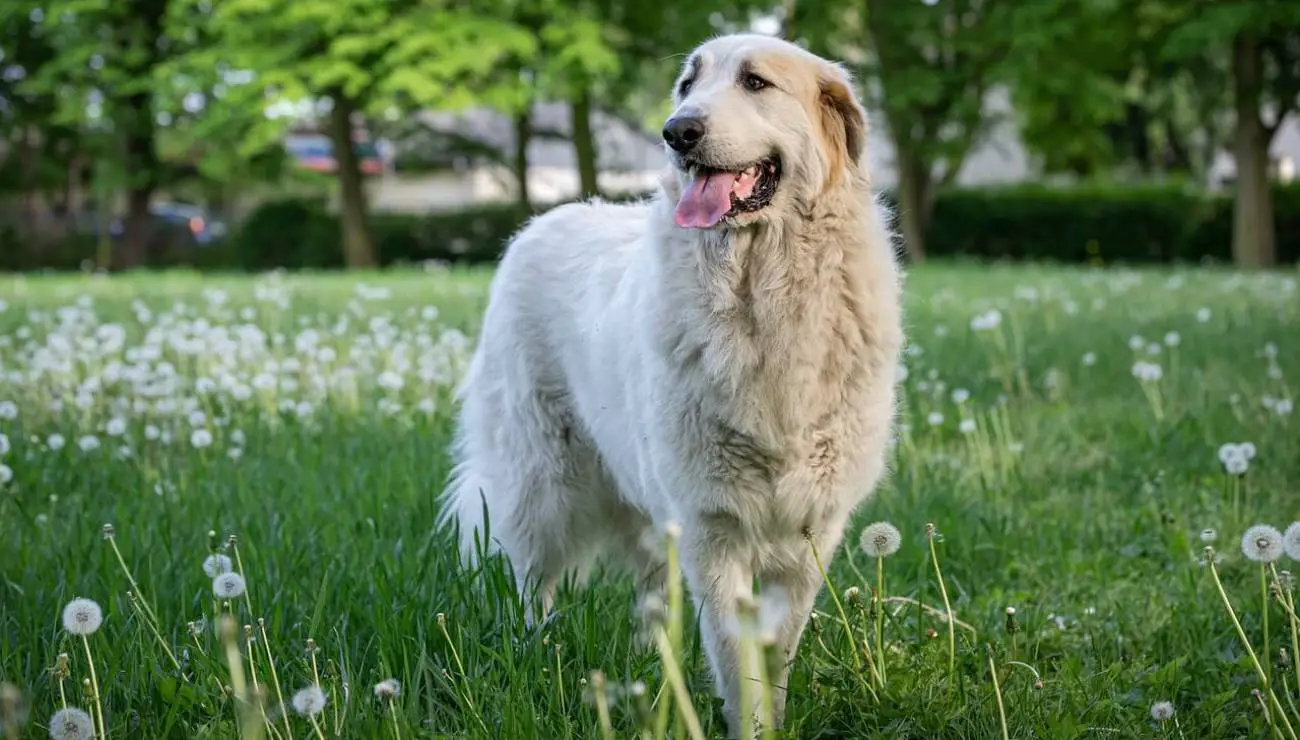
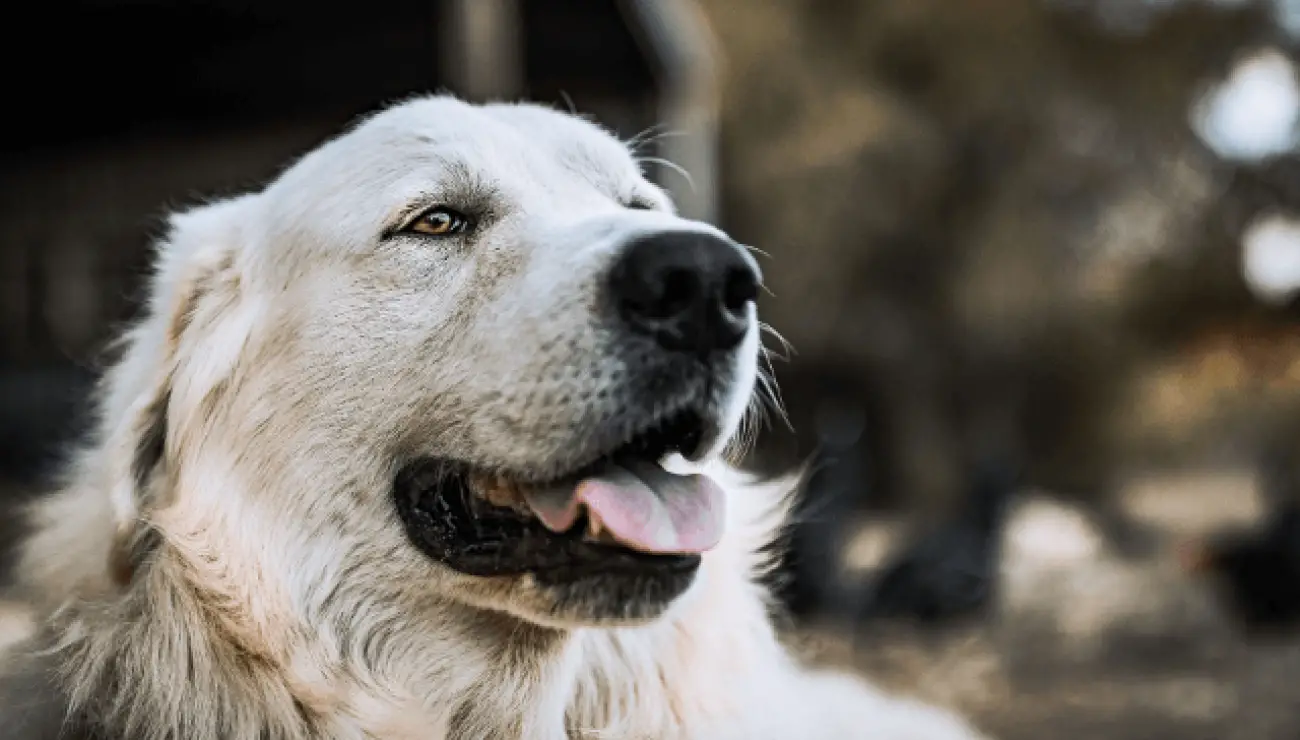
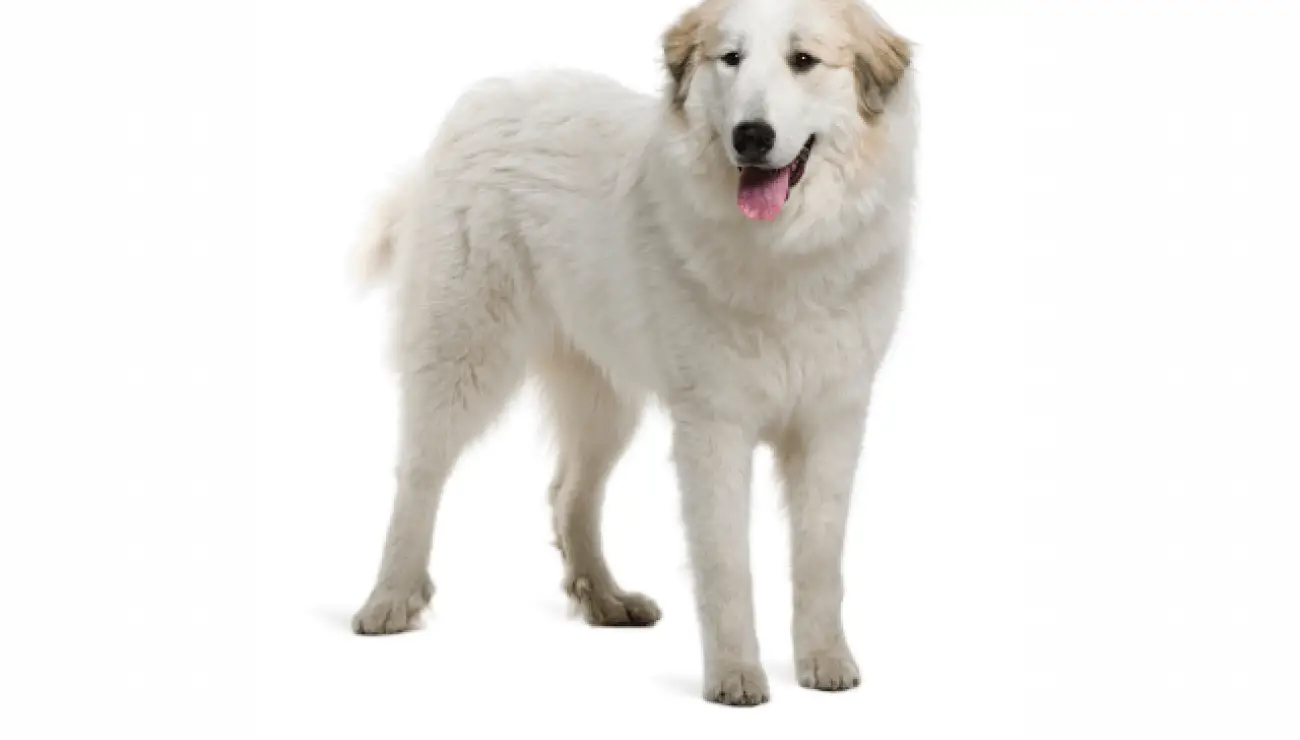
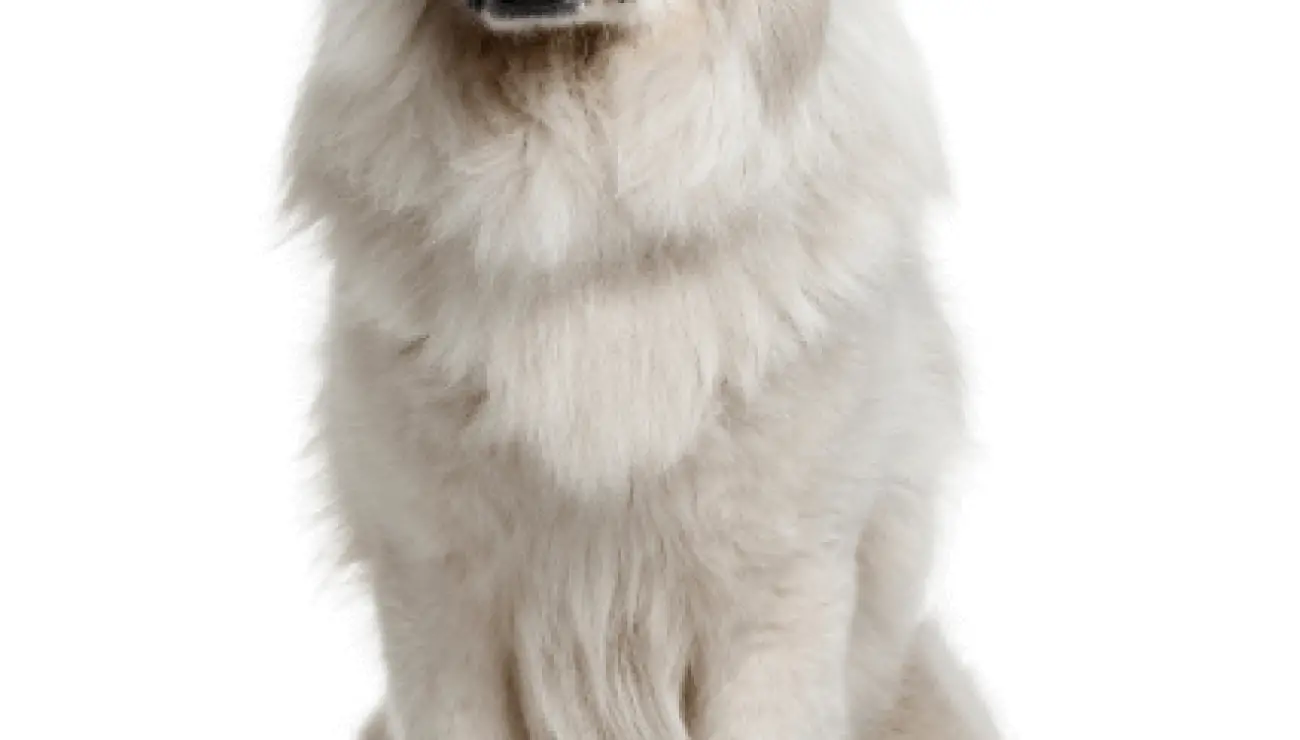
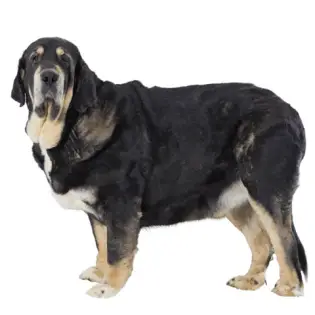
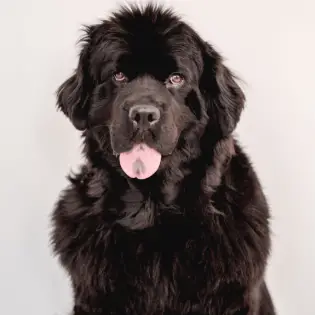
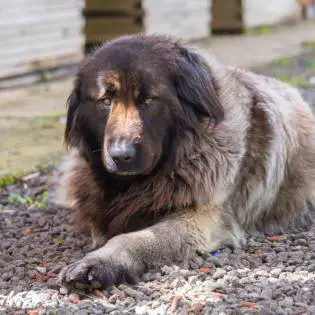
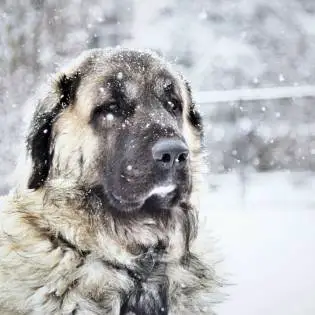
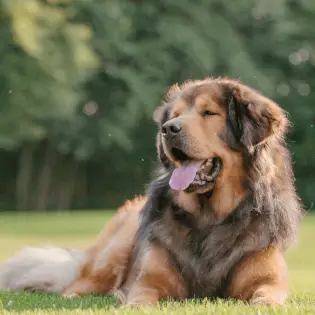


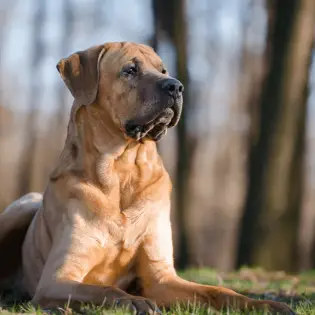
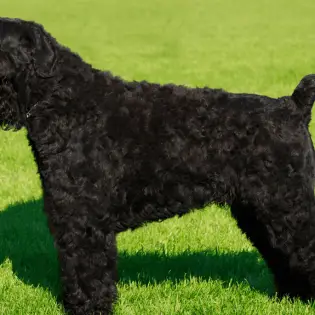
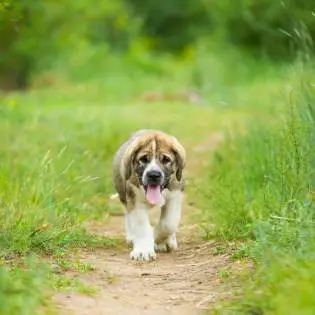

Share